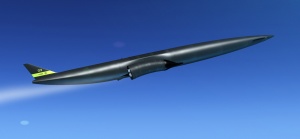Colonising Space
|
Resources within the solar system are mind-blowingly huge both in terms of energy and matter. There are planets, many moons and uncountable asteroids and comets. In space the sun is always shining and there is no atmosphere to attenuates it glare. Solar power is the obvious way to go in, at least in the inner solar system. Either photo-voltaic for electrical power or solar furnaces for material processing. Creating habitable places for people to live in this ultimately harsh environment is a matter of engineering – see advanced automation.
Creating large space habitats requires the kind of technology described in the section on advanced automation.
There are many places that we could locate these habitats, especially near Earth.
If mankind colonises space enabled by a programme based upon free and open-source-style collaboration, it would be an iconic example for future generations living away from Earth, in terms of encouraging co-operation and resource sharing. These human-centric principles may help reduce the chances of purely self-serving forms of commercialism being dominant in their culture and might lessen the likelihood of conflicts arising from aggressive, exclusionist groups that might otherwise be more common. If we do successfully colonise space, it is likely that eventually more of humanity will exist off the Earth than on it, so helping to set the right tone for these future colonies is a significant issue. We now have access to space using rockets although this is still expensive (over $5000 per pound of material launched[1]) and the failure rate is quite high. This severely limits what we can do in space; it is the main obstacle to space solar power and the colonisation of space. So far, we have only dipped our toes, if we want to really dive in we have to make spaceflight cheap and reliable. It may be that using abundant solar energy and seawater and advanced automation, mature rocket technologies like liquid-fuelled rockets actually end up becoming cheap and common-place, perhaps in conjunction with solid-rocket boosters like the Space Shuttle uses that employ metal fuels and inorganic oxidizers made from common elements.  Skylon single-stage-to-orbit (SSTO) hybrid air-breathing/rocket space-plane designed to carry 40 tonnes of cargo or 40 passengers to low earth orbit However many alternative and interesting launch systems are thought to be technically (or at least theoretically) feasible ranging from single stage to orbit hybrid air-breathing/rocket space-planes (SSTOs), electromagnetic and balloon platform launch assist to more exotic space fountains, launch loops and geosynchronous space elevators. It may be that launch strategies that can have their power systems decoupled from the propellant/propulsion systems and installed on the ground may end up being more economical and efficient in terms of energy expended per unit weight lofted into space. Information on these alternative launch methods are covered in more detail in this WP article John young - space is a dangerous business but so is staying on earth (find actual words!) Hawkins Earth cradle Aldrin Sagan Is Earth's surface really place for... George Mallory: etc. |




